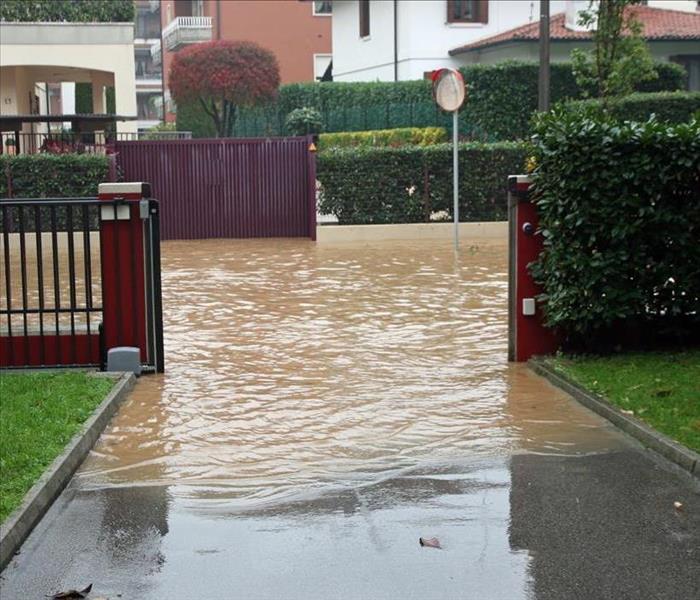What Are the Different Types of Water Damage?
10/29/2021 (Permalink)
 Depending on the type of water of the flood in your Rocky Mount, NC home, the cleaning process will be different.
Depending on the type of water of the flood in your Rocky Mount, NC home, the cleaning process will be different.
If you've ever been a victim of a home flood, you know it can be a very anxiety-provoking event. The destruction is transpiring right before your eyes and every second counts. If the water itself doesn't cause enough loss, the type of floodwater can also make a difference in the type of cleanup needed. There are three categories of water damage, each presenting a different level of risk to humans and pets.
Clean Water is water that is safe enough to drink, such as tap water, a leak from an appliance, or a burst pipe. While it's clean initially, it can transform into greywater within 48 hours when it comes into contact with a contaminated substance or surface.
Grey Water contains a contaminant level that can be harmful if consumed but not toxic. Dishwashers, washing machines, and bathtubs are a few sources of greywater. This water can become toxic within 48 hours if left to sit.
Black Water is highly contaminated water. It can contain sewage, bacteria, or viruses. Restoration should begin as quickly as possible, as the contaminants not only threaten humans and pets but can also worsen structural and other types of damage to the house.
How To Safely Clean Up Black Water
1. Wear Personal Protective Equipment
It's best to hire flood damage restoration experts to do a thorough, professional cleanup of this highly contaminated water. They have the expertise and equipment to make sure no detail is missed. Whoever does this job must protect themselves by wearing PPE. This equipment should include a disposable hair covering, safety goggles, a respirator mask, rubber gloves, water-resistant coveralls, and rubber boots. By wearing PPE, you're protecting yourself while keeping cross-contamination at bay. The PPE should be removed when leaving the affected area and replaced upon return.
2. Extract Standing Water
It's essential to remove standing water as quickly as possible to avoid increased contamination and structural damage. The safest and most effective way to extract standing water is to use a wet/dry vacuum. However, if you don't have access to one of these vacuums, a mop and towels will work but must be thoroughly disinfected after use.
3. Remove All Contents From the Area
Everything should be removed from the area to make room for performing the water damage cleaning process. In addition to furniture and other contents, this will often include removing carpet, padding, and other soaked floorings and wet areas of drywall.
4. Clean and Sanitize Everything
Next, the entire affected area and all salvageable contents must be thoroughly cleaned and sanitized before returning materials to the site or replacing floors and drywall.
5. Dry Everything Thoroughly
Finally, everything should be dried thoroughly. Open windows and doors and run fans, heaters, and dehumidifiers. Some furniture and other items will dry best outdoors in the fresh air.
A flood in your Rocky Mount, NC, home is terrible enough, simply in terms of the resulting water damage. When you add various contaminants to create grey or black water, the situation can get much more severe. Knowing what to do beforehand can be extremely beneficial if a disaster happens.




 24/7 Emergency Service
24/7 Emergency Service